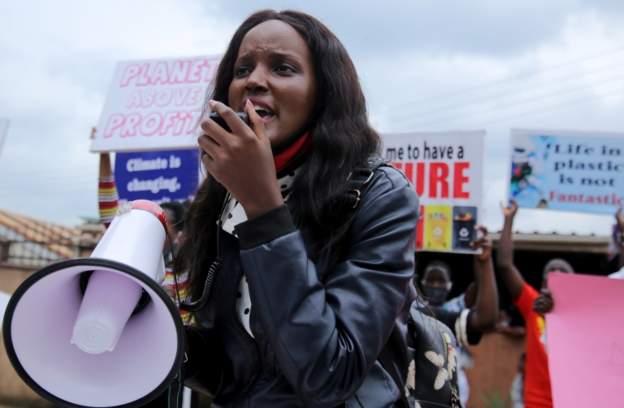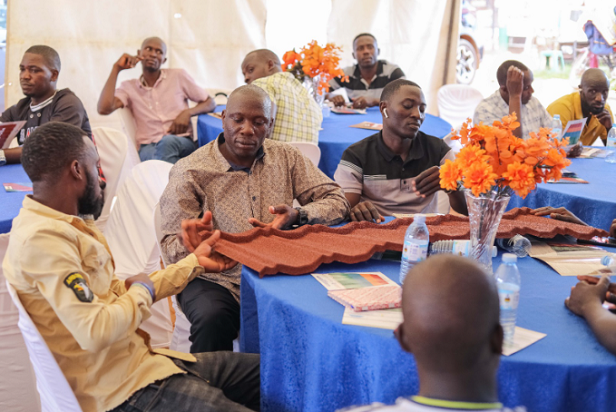High Voltage electricity Pylons in Mutukula. Some of the energy losses occur during transmission and distribution.
Theft and vandalism are some of the reasons why Uganda’s electricity sector has failed to bring down energy losses blamed for high electricity tariffs. Energy losses are the difference between the energy produced and purchased by the distributor and that sold to the final consumer.
The cost of energy that is not accounted for after purchase by the electricity distributor is unfortunately passed on to the final consumer.
Because the utility provider must purchase enough energy to cover your estimated consumption (including energy lost), this loss gets divided and passed on to customers.
While the Electricity Regulatory Authority has been pushing the electricity distributor to bring down the power losses to a single digit, it seems unlikely that they will comply given the rise in vandalism in 2022, low investment in transmission and distribution networks, and electricity oversupply.
Electricity Regulatory Authority in March 2022 said Energy losses have been fluctuating between FY2016/2017 to FY2020/2021 from the lowest of 17.1% to 18.4%.
Umeme, the main power distributor last year said it managed to reduce electricity losses from 18-17%. Umeme said the decline was a result of investment in transformers and matching them with demand. But that was still far below the 9% reduction suggested by Electricity Regulatory Authority. The concern about energy losses keeps on emerging whenever players in the electricity sector discuss tariffs.
According to the Ministry of Energy’s budget monitoring report for 2019, Uganda’s tariffs have been progressively rising from year to year, partly due to the high level of electricity losses which are “a combination of technical hitches, power thefts, and non-payment of bills.”
According to Uganda Electricity Distribution Company Limited (UEDCL) Managing Director, Paul Mwesigwa, energy losses from the distribution side is that received from the transmission network but not consumed by the consumer.
“If transmission dispatches 100 units and the final consumer consumes 83 units, the difference is the energy loss. But this is a cost to the sector and the population at large,” said Mwesigwa Electricity Regulatory Authority in 2021 said Uganda Electricity Transmission Company Limited (UETCL) energy purchases amounted to 5,024GWh with sales of 4,818GWh.
According to the ministry of energy, UETCL of paying 30 billion shillings in the financial year 2018/19 for deemed energy.
Transmission energy losses are computed as the percentage of energy purchased but not sold. The transmission energy losses kept fluctuating over the 5-year period with the lowest in 2019 at 3.6% and highest in 2021 at 4.1% compared to a globally acceptable rate of 2.5%.
Can there be a Solution to energy losses?
According to Mwesigwa the losses emanate from commercial and technical losses. “There are those externalities that happen on the network that causes energy to be lost and then there is a challenge of vandalism,” he said “If a network is partially vandalized it can continue dispatching energy. But it causes elements of bad workmanship.”
Electricity transmission and distribution networks have recently been targeted by vandals targeting underground cables, pylons, and transformers.
UEDCL Chief Engineer Protaze Tibyakinura observes vandalism in the past eight months caused a lot of pressure on electricity transmission and distribution infrastructure. “This vice has caused, and continues to cause, a critical challenge to the utility operators,” he said.
Tibyakinura hopes that the newly amended Electricity Act will help to fight vandalism of the transmission and distribution networks and thereby reduce energy losses. The Electricity Amendment Act of 2022 introduced tougher penalties like a one billion Shillings fine, or 25 years in jail, or both.
Vandalism of transmission and distribution infrastructure is not only being experienced in Uganda. A number of countries in Africa are battling the vice, especially targeting renewable energy projects.
A 2018 study – Analyzing the Impact of Theft and Vandalism in Relation to the Sustainability of Renewable Energy Development Projects in Sub-Saharan Africa – found that 53% were instigated by the choice of survival (i.e., theft and resell of RE infrastructure).
The report says: “Some of the participants told us about the profitability of such activities. In their experience, currently, only very few individuals have any idea of the advantages of such projects. As long as the locals are not involved as stakeholders in the projects.”
Apart from fighting vandalism, Paul Mwesigwa suggests the need to invest in the distribution infrastructure if energy losses are to come down.”In 2019 we did a distribution diagnostic review. And we found that to have a stable network, we need to have an investment that doesn’t go below $150 million annually for between 5-7 years, the challenge will be what is the impact of that investment into the end-user tariff,” Mwesigwa noted.
Mwesigwa revealed that currently about $50-70 million is invested in the transmission and distribution network per year. In 2021, Italy-based Renewable Energy Solutions for Africa (RES4Africa) and PwC said Africa’s electricity grids are characterized by infrastructural flaws, inefficiency and limited coverage, preventing universal access to electricity and hampering the continent’s development.
The analysis which focused on Algeria, Ethiopia, Ghana, Kenya, Morocco, South Africa, Tanzania, Uganda, and Zambia highlighted a chronic lack of investments as the main reason for the status quo.
It said public utilities suffer from staggering quasi-fiscal deficits (implicit subsidies), averaging 1.5% of GDP in the ten sample countries. “In order to compensate for these issues, many public utilities resort to increased tariffs, leading to a reduction in the customer base and, ultimately, getting trapped in a vicious cycle,” read part of the report.
At the time when the government had taken a decision not to renew Umeme’s twenty-year distribution concession, RES4Africa came out with a report titled ‘Private Sector Participation in African Grid Development’ The report said in private distribution operators were outperforming public utilities on reducing distribution losses. For Uganda, it said UEDCL had two times higher losses than those in Umeme Operated network.
Electricity Supply and Demand
Other studies have found that energy loss from the distribution side is likely to persist as long as productive use of electricity and investment in demand for electricity is not stepped up.
The Ministry of Energy’s priority and Issue paper in 2019 in what appeared like accepting the existence of an electricity oversupply challenge said there was a need to suppress around 450 MW of potential near-term demand, increase the cost of service by a further $0.10/kWh and the cost due to unutilized capacity by $125 million per year by 2023.
Some analysts have found that while the installed capacity of electricity shot up by 140% between 2008-2016 domestic energy consumption per household fell by 37 percent.
The Ministry of energy with support from some donors has since 2018 been implementing the Energy Connection Policy as part of the efforts to increase connections on- and off-grid.
Energy minister Ruth Nankabirwa in December announced a number of connection initiatives to stimulate demand for electricity. They include; The hybrid customer connection financing Framework which will see a reduction in the cost for a no-pole new customer connection from UGX 720,883 to UGX 470,000 through a subsidy of UGX 250,883 for each no-pole connection.
The government is providing a subsidy through the Uganda Development Bank for a credit line of UGX 270,000 for those who are unable to pay a lump sum of UGX 470,000.
Similarly, through Energy Access Scale-up Project (EASP) supported by the World Bank, 1,360,000 households, industrial Parks, SMEs and refugees and host communities will get connected to electricity under the Electricity Connection Policy (ECP).
–URN





